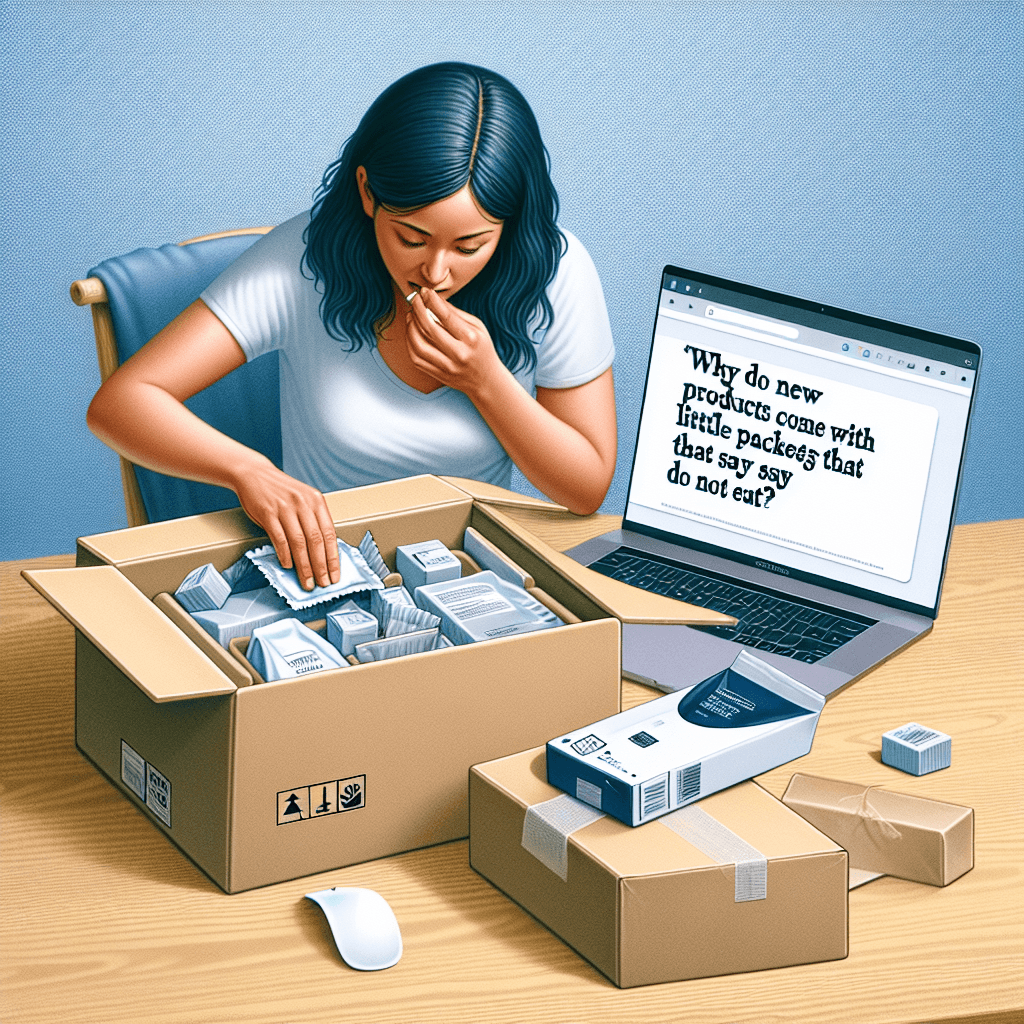Why do new products come with little packets that say do not eat
You've been told your whole life not to eat them, but the real reason for that terrifying warning isn't what you think. We’re finally revealing the secret inside the world's most famous forbidden snack.


Too Long; Didn't Read
TLDR: Those packets contain silica gel to absorb moisture and keep products fresh and dry. The do not eat warning exists because they are a choking hazard, not because they are toxic.
Unpacking the Mystery: Why Do New Products Come with Little Packets That Say "Do Not Eat"?
You've seen them a thousand times. You open a new pair of shoes, a leather handbag, a bottle of vitamins, or a piece of electronics, and there it is: a small, papery packet filled with tiny beads, stamped with the stern warning, "DO NOT EAT. THROW AWAY." We all dutifully toss them in the trash, but have you ever stopped to wonder what they are and why they're so essential? These unassuming packets are the unsung heroes of the manufacturing and shipping world. This post will demystify these little guardians, explaining what’s inside, why they’re included, and whether that warning is as dire as it sounds.
The Unseen Guardian: What's Inside the 'Do Not Eat' Packet?
The substance tucked inside most of these packets is silica gel. Despite its name, it isn't a gel at all. It's a solid, porous form of silicon dioxide, the same compound that makes up natural quartz and sand. It’s manufactured into tiny, hard beads that act as a desiccant.
A desiccant is simply a substance that absorbs moisture from the air. Silica gel is exceptionally good at this due to its porous structure. Each tiny bead is covered in millions of microscopic pores that can attract and hold water molecules through a process called adsorption. This means water vapor sticks to the surface of the beads, effectively pulling it out of the surrounding environment. Think of it as a powerful, tiny sponge for humidity.
The Arch-Nemesis of Moisture: Why Your New Gadgets Need a Desiccant
Moisture is the natural enemy of countless consumer goods. During shipping and storage, products can spend weeks or months in cargo containers, warehouses, and trucks, where temperature and humidity fluctuations can create a damaging environment. This is where silica gel packets come in. By absorbing excess moisture within the packaging, they prevent a host of problems:
- Electronics: Moisture can cause condensation on circuit boards, leading to short circuits and corrosion that can permanently damage a device before you even turn it on.
- Leather Goods and Clothing: Humidity can lead to the growth of mold and mildew, which can stain, weaken, and ruin leather shoes, bags, and jackets.
- Food and Pharmaceuticals: In bottles of vitamins, jerky, or other dry goods, moisture can cause clumping, spoilage, and the degradation of active ingredients, reducing their effectiveness.
- Metal Items: Tools, razor blades, and other metal products are protected from rust and corrosion.
Essentially, that little packet ensures your product arrives in the pristine condition you expect.
Decoding the Warning: How Harmful Is Silica Gel?
The "DO NOT EAT" warning, often printed in bold capital letters, can be alarming. So, what happens if a curious child or pet ingests the contents?
The good news is that the common white or translucent silica gel found in consumer products is chemically inert and non-toxic. According to health authorities, it is not absorbed by the body and will pass through the digestive system unchanged. The primary reason for the stark warning is that the packet and its beads pose a serious choking hazard, especially for small children and animals.
Additionally, because the beads absorb moisture, ingesting a large quantity could potentially cause mild dehydration or an upset stomach, but this is rare.
It's important to note that a different type of silica gel, often used for industrial purposes, contains a moisture indicator like cobalt chloride, which appears blue when dry and turns pink when saturated. This indicator is toxic and should not be handled casually. However, this type is almost never found in consumer product packaging.
From Trash to Treasure: Smart Uses for Desiccant Packets
Instead of automatically throwing them away, you can give these moisture-fighting packets a second life. They are incredibly useful for protecting your belongings at home. Consider these ideas:
- Protect Your Tools: Toss a packet in your toolbox to prevent your tools from rusting.
- Save a Wet Phone: If your phone takes an unfortunate dive, place it in a sealed bag with several silica gel packets for 24-48 hours to draw out the moisture.
- Defog Your Car Windshield: Keep a few packets on your dashboard to help reduce interior fogging during humid or cold weather.
- Preserve Important Documents: Place a packet in a box with old photos, birth certificates, and other papers to prevent them from becoming musty or sticking together.
- Keep Gym Bags Fresh: A packet in your gym bag or locker can help absorb sweat-induced moisture and reduce odors.
You can even "recharge" the packets by baking them on a foil-lined tray in the oven at a low temperature (around 200°F or 100°C) for one to two hours to dry them out for reuse.
So, the next time you unbox a new product, you’ll know the full story behind that little "do not eat" packet. It’s not just a piece of packaging to be discarded, but a tiny, powerful tool of preservation. While you certainly shouldn't eat it, you can definitely put its moisture-absorbing abilities to good use long after it has fulfilled its primary mission.


